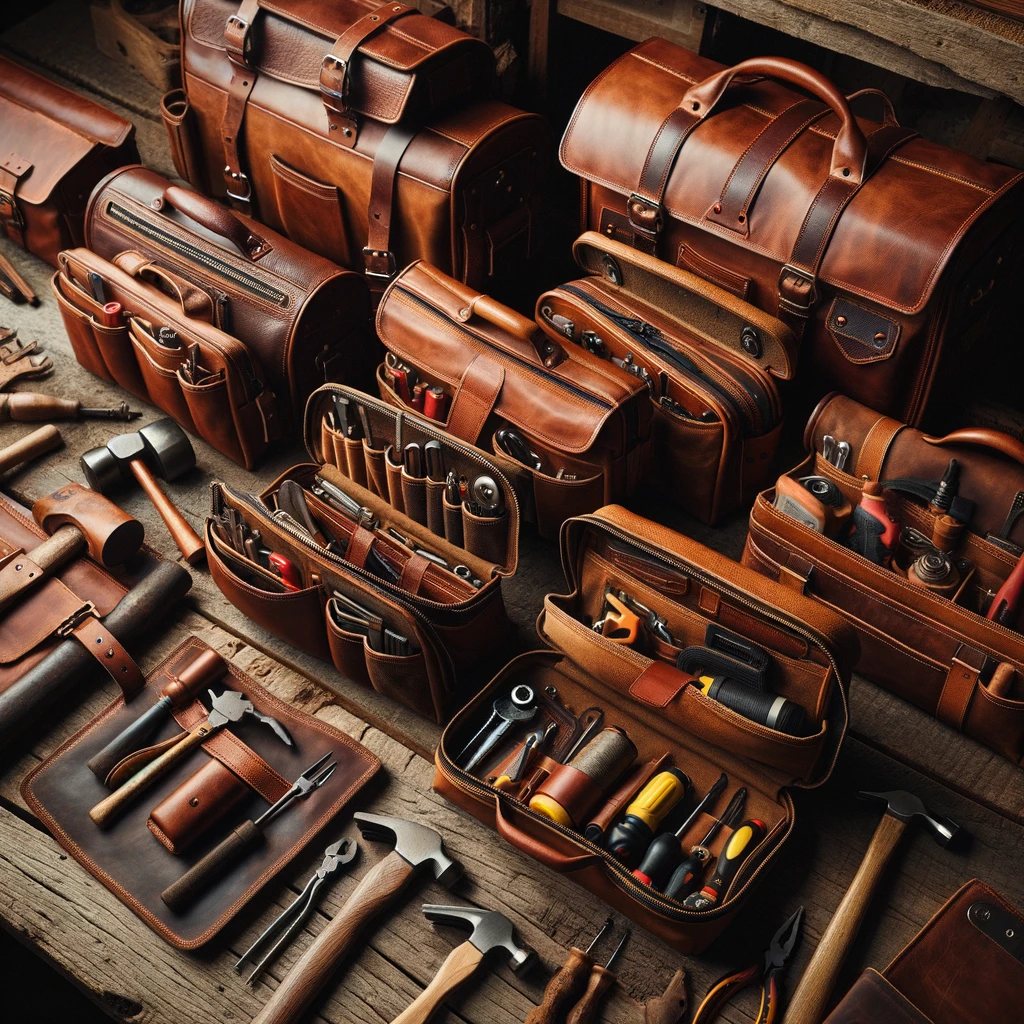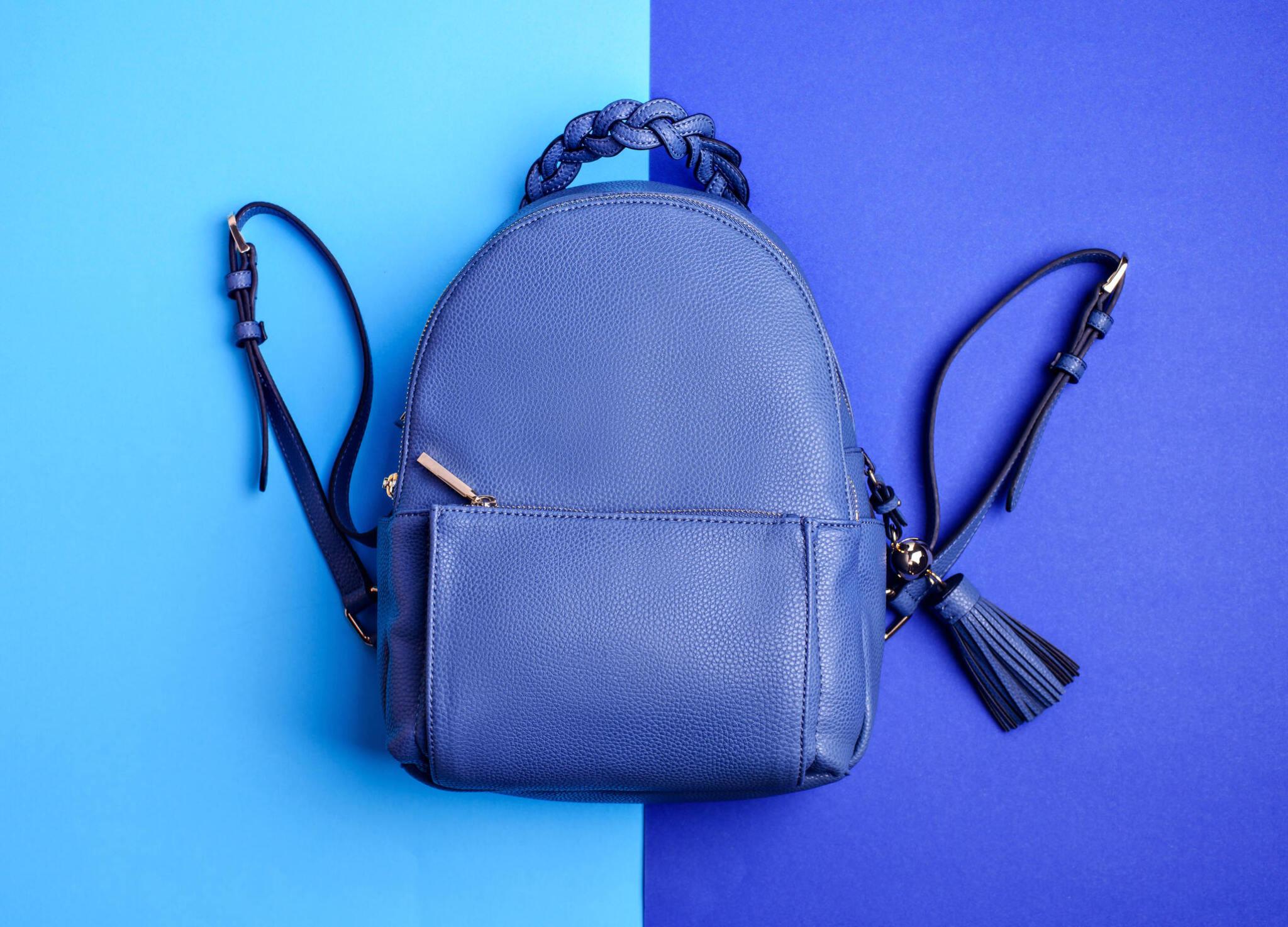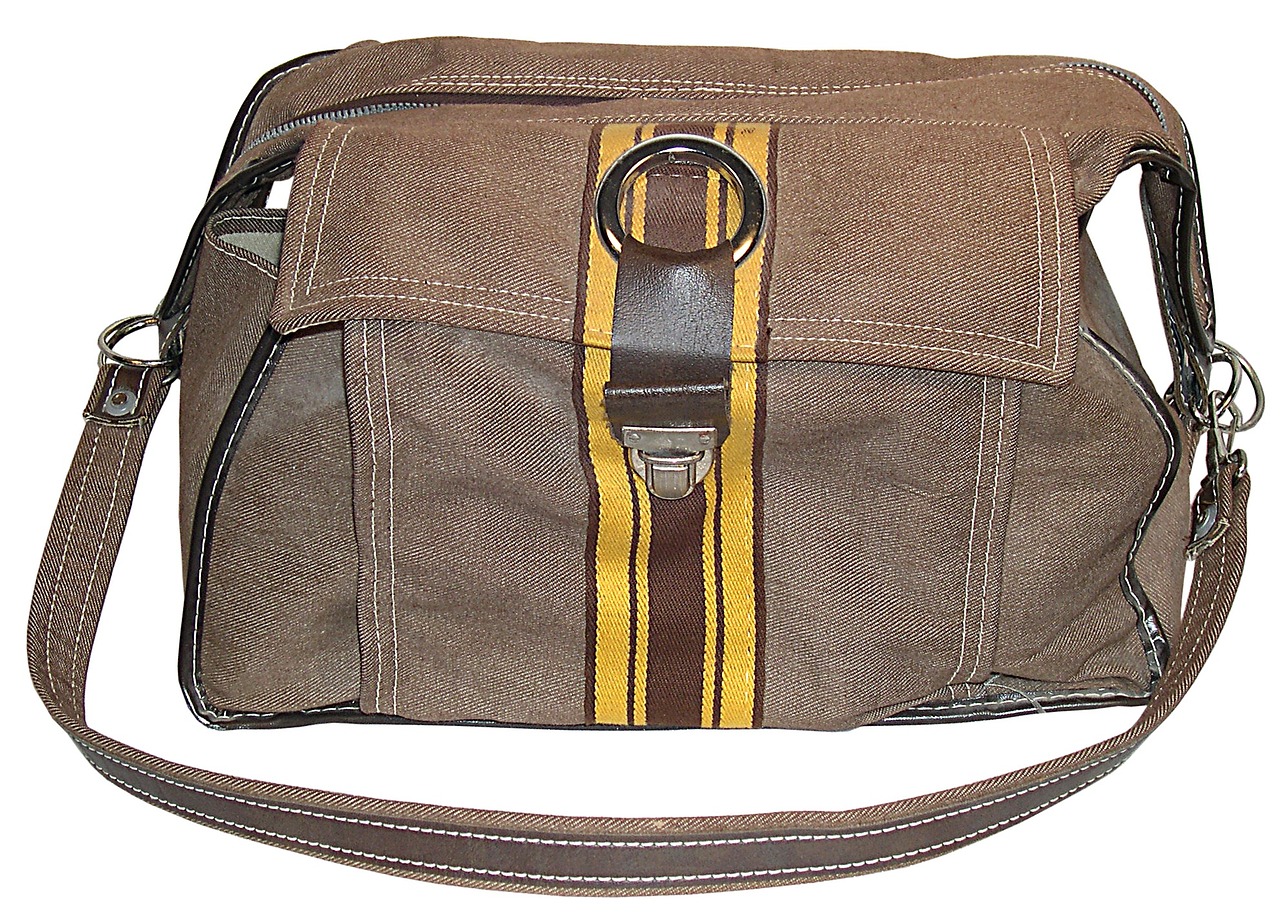Organizing your tools efficiently is essential for any craftsman or tradesperson. A well-organized tool bag not only enhances productivity but also protects your tools and makes them easily accessible when needed. Among the myriad of tool storage options available, leather tool bags stand out as a timeless and reliable choice. Let’s explore the best way to organize tools with leather tool bags.
Start with Sorting:
Before you begin organizing your tools, take inventory and sort them into categories based on their type, size, and frequency of use. This initial step will help you determine the most effective layout for your leather tool bag.
Choose the Right Bag:
Select a leather tool bag that suits your specific needs and preferences. Consider factors such as size, style, and features like pockets, compartments, and loops. A well-designed tool bag will offer ample storage space and convenient organization options.
Utilize Compartments and Pockets:
Take advantage of the compartments and pockets in your leather tool bag to keep your tools neatly organized and easily accessible. Assign specific pockets or compartments for different types of tools to streamline your workflow and minimize searching time.
Prioritize Accessibility:
Arrange your tools in your leather tool bag based on their frequency of use, with commonly used tools placed in easily accessible pockets or compartments. This ensures that you can quickly grab the tools you need without rummaging through the entire bag.
Secure Loose Items:
Use loops, straps, or Velcro closures to secure loose items such as screwdrivers, wrenches, or pliers. This prevents them from shifting around during transport and minimizes the risk of damage or loss.
Group Similar Items Together:
Group similar tools together within your leather tool bag to create a logical and efficient organization system. For example, keep all electrical tools in one section, plumbing tools in another, and carpentry tools in a separate area. This makes it easier to locate specific tools when needed.
Consider Tool Protection:
Invest in protective sleeves or sheaths for sharp or delicate tools to prevent them from damaging other items in your leather tool bag. Alternatively, wrap them in soft cloth or foam padding for added protection.
Regular Maintenance:
Periodically review and reorganize your leather tool bag to ensure that it remains optimized for your needs. Clean the bag regularly to remove dust, dirt, and debris, and inspect it for any signs of wear or damage that may require repair or replacement.
Customize Your Setup:
Don’t be afraid to customize your leather tool bag to suit your unique requirements. Experiment with different layouts, configurations, and storage solutions until you find the setup that works best for you.
Label or Color-Code:
Consider labeling or color-coding your tools or compartments for easy identification. This simple yet effective technique can help streamline your organization system and minimize confusion.
Organizing tools with a leather tool bag is an art form that requires careful planning, consideration, and maintenance. By following these tips and best practices, you can create a well-organized and efficient system that enhances your productivity and protects your valuable tools for years to come.
The Importance of Organized tools with leather Tools Bags
In the realm of craftsmanship and handiwork, the importance of organized tools cannot be overstated. Whether you’re a seasoned artisan or a hobbyist, the efficiency and ease of access to your tools can significantly impact the quality of your work. While there are various options for tool storage and organization, one timeless and reliable choice stands out: leather bags.
Leather bags have been a staple in tool organization for centuries, prized for their durability, versatility, and classic aesthetic appeal. They offer a level of sophistication and professionalism that other materials simply cannot match. From rugged construction sites to sleek workshop studios, leather bags have earned their reputation as indispensable companions for craftsmen of all trades.
Primary Advantages of Leather tool Bags
One of the primary advantages of leather tool bags is their durability. Unlike synthetic materials that may wear down over time or succumb to tears and punctures, leather is renowned for its resilience. A well-crafted leather bag can withstand the rigors of daily use, protecting your tools and equipment from damage while retaining its shape and structure for years to come. This durability ensures that your investment in a leather tool bag is a long-term one, providing reliable storage and organization through countless projects.
Additionally, leather bags offer unparalleled versatility. With a wide range of sizes, styles, and configurations available, you can easily find a leather bag to suit your specific needs and preferences. Whether you require a compact pouch for handheld tools or a spacious tote for larger equipment, there is a leather bag designed to accommodate your requirements. Many leather bags also feature multiple compartments, pockets, and loops, allowing you to organize your tools efficiently and access them with ease. This level of customization ensures that your tools are always within reach, minimizing downtime and maximizing productivity.
Beyond their practical benefits, leather tool bags exude a timeless elegance and sophistication that sets them apart from other storage solutions. Crafted from high-quality leather and meticulously stitched to perfection, these bags are a testament to craftsmanship and attention to detail. Their rich textures, earthy tones, and distinctive patinas only enhance their allure, making them not just functional tools but also stylish accessories that reflect your professionalism and taste.
Level of Protection and security:
Leather tool bags offer a level of protection and security that is unmatched by other materials. Leather naturally repels moisture and dust, helping to shield your tools from environmental hazards and prolonging their lifespan. Additionally, many leather bags feature reinforced handles and straps, as well as sturdy closures such as zippers or buckles, ensuring that your tools remain safe and secure during transport. Whether you’re heading to a job site or simply moving between workstations, you can trust that your tools are well-protected in a leather bag.
When it comes to elevating your tool organization, leather bags are a superior choice in every aspect. From their durability and versatility to their timeless elegance and practicality, leather tool bags offer unmatched benefits for craftsmen of all disciplines. By investing in a quality leather bag, you’re not just acquiring a storage solution – you’re acquiring a trusted companion that will enhance your efficiency, protect your tools, and elevate your professional image for years to come.
Choosing the Right Size and Style for Your Needs: Leather Tool Bags
When it comes to selecting a leather tool bag, one of the most critical factors to consider is finding the perfect combination of size and style that suits your specific requirements. Whether you’re a professional tradesperson, a DIY enthusiast, or a hobbyist, having the right tool bag can make all the difference in your efficiency and organization. Here’s a comprehensive guide on how to choose the right size and style for your needs when it comes to leather tool bags.
Assess Your Tool Collection:
Before diving into the selection process, take inventory of your tools. Consider the types and sizes of tools you frequently use, as well as any specialized equipment that requires additional space. This will give you a clear idea of the capacity and compartments you’ll need in your leather tool bag.
Determine Your Mobility Requirements:
Think about how you’ll be using your tool bag. Will you primarily be working at a fixed location, such as a workshop or job site, or will you need to transport your tools frequently? If mobility is a priority, opt for a leather tool bag with comfortable carrying handles or straps and consider features like wheels or a telescoping handle for easier transport.
Consider Your Workspace:
Take into account the environment in which you’ll be using your tool bag. If you have limited space in your workshop or workspace, a compact and portable leather tool bag may be more practical. Conversely, if you have ample room to spread out, you may prefer a larger bag with multiple compartments for enhanced organization.
Think About Longevity:
Investing in a high-quality leather tool bag is essential for long-term durability and functionality. Look for bags made from genuine leather rather than synthetic materials, as genuine leather is more resistant to wear and tear and develops a unique patina over time. Pay attention to the stitching, hardware, and overall craftsmanship of the bag to ensure it can withstand the demands of daily use.
Choose a Style That Reflects Your Preferences:
Leather tool bags come in a variety of styles, from classic to contemporary. Consider your personal preferences and aesthetic sensibilities when selecting a style that suits you. Whether you prefer a rugged, vintage-inspired design or a sleek and modern look, there’s a leather tool bag out there to match your style.
Prioritize Organization:
Effective organization is key to maximizing the utility of your leather tool bag. Look for bags with multiple compartments, pockets, and loops to keep your tools neatly organized and easily accessible. Consider your workflow and the types of tools you use most frequently when deciding on the layout of the bag.
Test for Comfort:
Finally, don’t forget to consider comfort when choosing a leather tool bag. If you’ll be carrying heavy loads or wearing the bag for extended periods, opt for a design with padded straps or handles for added comfort. Take the time to try on different bags and assess how they feel when fully loaded with your tools.
Choosing the right size and style for your needs when it comes to leather tool bags requires careful consideration of factors such as tool collection, mobility requirements, workspace, longevity, style preferences, organization, and comfort. By taking the time to assess your needs and priorities, you can select a leather tool bag that not only meets your practical requirements but also reflects your personal style and enhances your efficiency and organization in any work environment.
Maintaining and Caring for Your Leather Tool Bag
Leather tool bags are not just functional accessories; they are investments in quality craftsmanship and durability. To ensure that your leather tool bag retains its beauty and functionality for years to come, proper maintenance and care are essential. From regular cleaning routines to protective measures, here’s a comprehensive guide on how to maintain and care for your leather tool bag.
Regular Cleaning:
Regular cleaning is the cornerstone of leather tool bag maintenance. Start by removing any debris, dust, or dirt from the surface of the bag using a soft-bristled brush or a clean, dry cloth. Be gentle to avoid scratching or damaging the leather. For stubborn stains or spots, dampen a cloth with water and mild soap, then gently blot the affected area. Avoid using harsh chemicals or abrasive cleaners, as they can damage the leather’s finish.
Conditioning:
Leather is a natural material that can dry out and become brittle over time, especially with frequent use. To keep your leather tool bag supple and moisturized, it’s essential to condition it regularly. Choose a high-quality leather conditioner or balm and apply it evenly to the surface of the bag using a soft cloth. Allow the conditioner to penetrate the leather for a few minutes, then buff the bag with a clean cloth to remove any excess product. Conditioning not only nourishes the leather but also helps to restore its natural luster and color.
Protecting Against Moisture:
Leather is susceptible to water damage, so it’s essential to protect your tool bag from moisture and humidity. Avoid exposing your leather tool bag to rain, spills, or excessive moisture, as prolonged exposure can cause the leather to warp, crack, or develop mold. If your bag does get wet, gently pat it dry with a clean cloth and allow it to air dry naturally, away from direct heat sources. To provide an additional layer of protection, consider treating your leather tool bag with a water-repellent spray or wax-based protector.
Avoiding Sunlight and Heat:
Direct sunlight and heat can cause leather to fade, dry out, and become brittle over time. To prevent damage, store your leather tool bag in a cool, dry place away from direct sunlight, radiators, or other sources of heat. If your bag becomes excessively hot or exposed to prolonged sunlight, it can lead to discoloration, cracking, or warping of the leather. When not in use, consider storing your leather tool bag in a protective dust bag or cover to shield it from environmental hazards.
Handling with Care:
Leather tool bags may be durable, but they still require gentle handling to maintain their integrity. Avoid overloading your bag with heavy tools or equipment, as this can strain the seams and cause the leather to stretch or sag. When carrying your bag, support the weight evenly to prevent undue stress on the handles or straps. Additionally, avoid placing sharp or abrasive objects directly against the leather surface, as they can scratch or puncture the material.
Professional Cleaning and Repair:
If your leather tool bag requires more extensive cleaning or repairs, it’s best to seek professional assistance from a reputable leather specialist. Professional cleaners have the expertise and tools to safely clean and restore your bag without causing further damage. They can also repair minor tears, scratches, or hardware issues to ensure that your leather tool bag looks and functions its best.
Maintaining and caring for your leather tool bag is essential to preserve its beauty, functionality, and longevity. By following these simple guidelines for regular cleaning, conditioning, protection, and handling, you can ensure that your leather tool bag remains a reliable companion for all your projects for years to come. With proper care and attention, your leather tool bag will continue to age gracefully and develop a unique patina that reflects its quality craftsmanship and enduring appeal.
The Best types of Leather Tool Bags
There are several types of leather tool bags available, each designed to suit different needs and preferences. Here are some common types:
Tool Totes:
Tool totes are spacious, open bags with wide openings and sturdy handles, making them ideal for carrying larger tools and equipment. They often feature multiple pockets and compartments for organizing smaller items, such as screws, nails, and hand tools.
Tool Backpacks:
Tool backpacks are designed for hands-free carrying, with padded shoulder straps and ergonomic designs that distribute weight evenly. They offer ample storage space and organizational features, including pockets, loops, and compartments, making them a convenient option for professionals who need to transport their tools over longer distances.
Tool Belts:
Tool belts are worn around the waist and feature multiple pouches and pockets for storing tools within easy reach. They are commonly used in construction, carpentry, and other trades where mobility and quick access to tools are essential. Leather tool belts are durable and provide a classic look, while offering the functionality needed for on-the-job tasks.
Tool Roll-Ups:
Tool roll-ups are compact, portable organizers that allow you to roll up and secure your tools for easy transport. They are typically made from durable leather and feature slots or pockets for holding various tools, which can then be rolled up and secured with straps or buckles. Tool roll-ups are a convenient option for professionals who need to carry a select set of tools for specific tasks.
Tool Pouches:
Tool pouches are small, pouch-like bags that attach to belts or straps for easy access to essential tools and accessories. They are available in various sizes and configurations, from single-pocket pouches to multi-compartment designs. Tool pouches are commonly used by tradespeople and DIY enthusiasts who need to keep their most frequently used tools close at hand.
Tool Boxes:
While not strictly bags, leather tool boxes are worth mentioning as they offer a durable and stylish option for tool storage. They come in various sizes and designs, from traditional wooden boxes with leather handles to modern metal or plastic boxes with leather accents. Tool boxes provide ample storage space and protection for tools, making them a popular choice for workshops and job sites.
Each type of leather tool bag offers unique features and benefits, allowing you to choose the one that best suits your specific needs and preferences. Whether you prefer the versatility of a tool backpack, the convenience of a tool belt, or the classic look of a tool tote, there’s a leather tool bag out there to help you organize and transport your tools with style and efficiency.
FAQ
Leather tool bags offer durability, longevity, and a classic appearance. Leather is resistant to wear and tear, making it ideal for heavy-duty use. Over time, leather can also develop a unique patina that adds character. Additionally, leather is a naturally tough material that can protect tools from damage and the elements.
To maintain a leather tool bag, regularly clean it with a damp cloth to remove dust and debris. Apply a leather conditioner or cream every few months to keep the leather supple and prevent it from drying out or cracking. Avoid prolonged exposure to direct sunlight and water, as these can cause the leather to fade or become stiff.
Yes, leather tool bags are designed to withstand harsh working conditions. Leather is inherently durable and can protect your tools in various environments, from construction sites to outdoor work. However, regular maintenance is key to ensuring your leather tool bag remains in good condition.
There are various types of leather tool bags available, catering to different needs and preferences. These include bags with multiple pockets and compartments for organization, rolling leather tool bags for easy transport, and compact bags for basic tool sets. The choice depends on the type and amount of tools you need to carry.
While leather tool bags can be more expensive than their synthetic counterparts, many consider them a worthwhile investment due to their durability and aesthetic appeal. A high-quality leather tool bag can last for many years, even decades, with proper care, making it a cost-effective choice in the long run.







